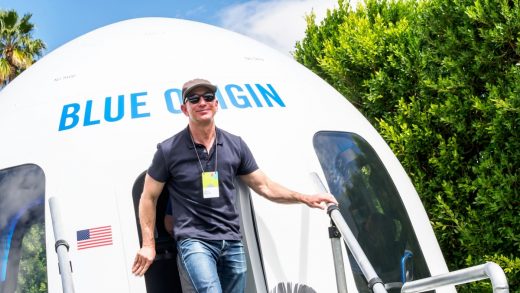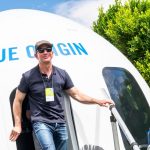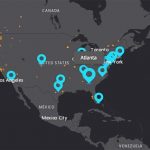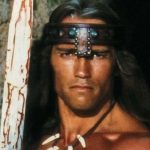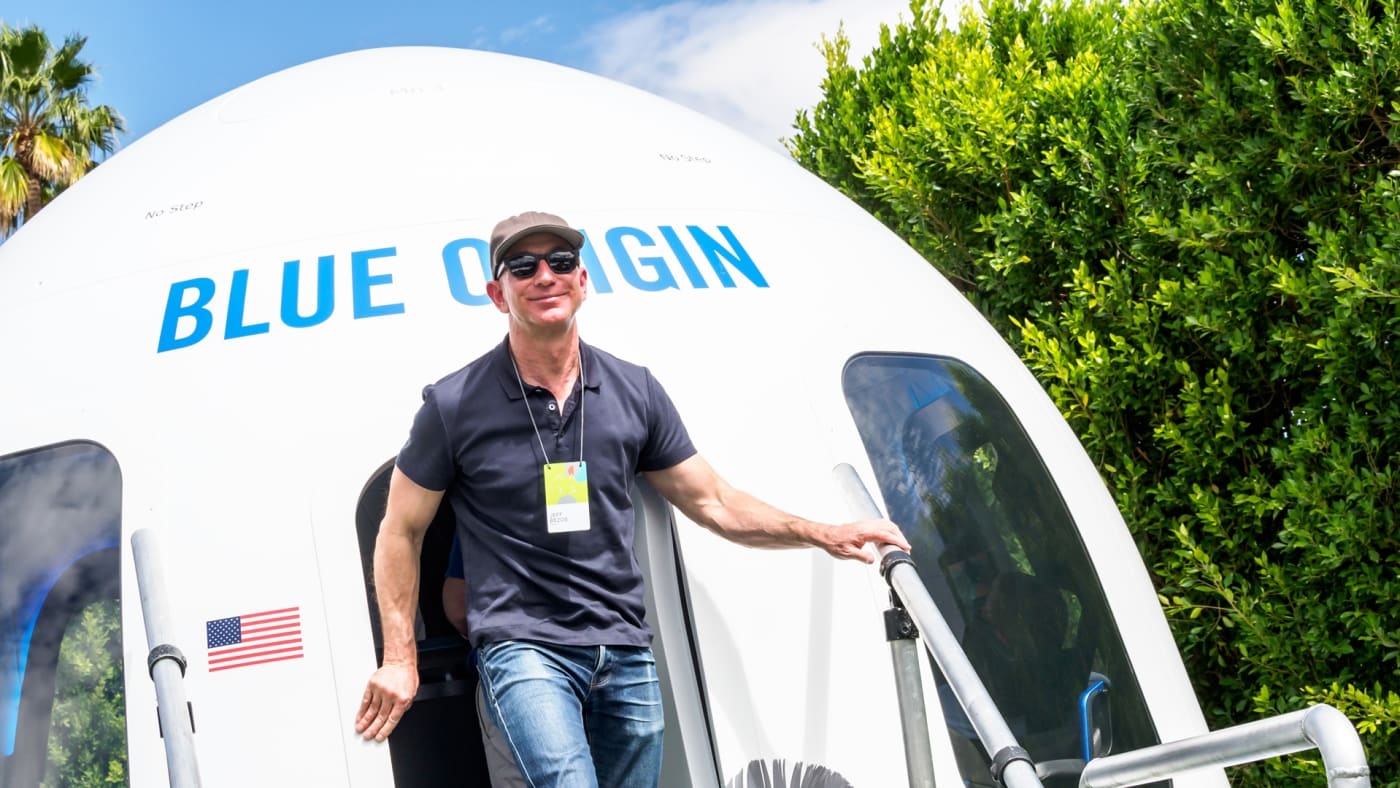At Amazon’s MARS Conference, Jeff Bezos Plots The Future With 200 (Very) Big Brains
Jeff Bezos has his left foot propped up on a fire pit, his face illuminated by the flames. A drink in his hand, he’s feeling relaxed, often bursting out in that signature bellow of a laugh.
Joining Bezos at the firepit that night and over the course of three days at the Parker Hotel in Palm Springs, California are about 200 of the world’s smartest and most accomplished people–among them: two astronauts, at least one Nobel Prize winner, the former head of DARPA, NASA’s former number two, Intel CEO Brian Krzanich (“BK,” he’s called here), MythBuster Adam Savage, Segway inventor Dean Kamen, and so on.
With cigars and whiskey in their hands, these global power players are talking earnestly about Big Issues: gravitational waves, ground-breaking tools for helping the deaf perceive the world in new ways, cutting-edge robot grasping technology, hyper-efficient 3D-printed rocket engines, and AI, always AI. In some way, even sometimes tenuously, each of these technologies ties back to Amazon’s goals.
Welcome to Amazon’s MARS Conference–or, as Bezos calls it, “Summer camp for geeks.”
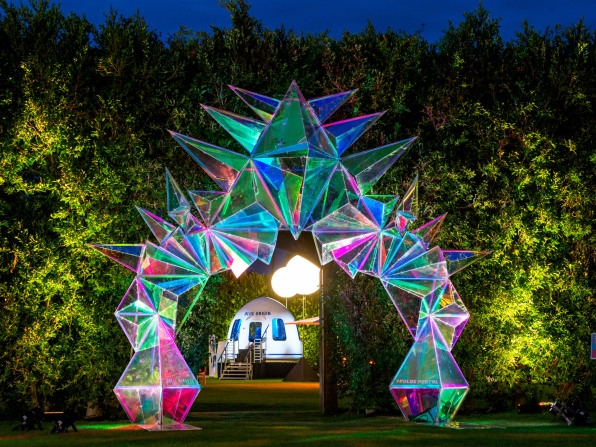
MARS–short for machine learning, (home) automation, robotics, and space exploration–is in its third year. It’s invite-only, tucked away behind the walls and greenery of the Parker. In past years, people aware that it was happening noted the presence of a Blue Origin rocket–Bezos-owned, of course–sticking out above the Parker’s manicured hedges. This year, numerous tweets from attendees celebrating things like Bezos playing beer pong against a robot heralded that the conference was underway.
Taking my new dog for a walk at the #MARS2018 conference. #BostonDynamics pic.twitter.com/vE6CXrvV3o
— Jeff Bezos (@JeffBezos) March 19, 2018
Amazon’s has numerous reasons for hosting the event. Clearly, bringing leaders in areas like AI, automation, robotics, and space exploration fits into the company’s business goals. Yet most of what happens at MARS is unstructured conversations, only some of which involve actual Amazon personnel. Far more likely is discussion that will never directly benefit the company.
Still, Amazon sees tremendous value in this. Asked to expand on the goals behind putting on MARS, Amazon senior vice president for devices and services David Limp notes that the company wants to move the state of the art of science and thought forward, and inventors and dreamers are the ones who will do that, and benefit Amazon in the process.
“It could be as simple as a small advancement in an open-source library for machine learning,” Limp says. “It could be a small advancement in somebody being inspired to [go home] and write a book.”
Limp adds that MARS isn’t about today. It’s about the future. “We don’t think about the business in terms of tomorrow, next week, or next quarter,” he says. “What we want to think about in our business is, What can we do to benefit customers a decade in the future. And if you’re going to benefit a customer a decade ahead, you have to plant seeds now.”
But don’t think that Amazon wants to share the fruit from those seeds. Among the 200 big brains on hand, I found it hard to ignore the conspicuous absence of anyone from Google, Microsoft, Apple, or Facebook.
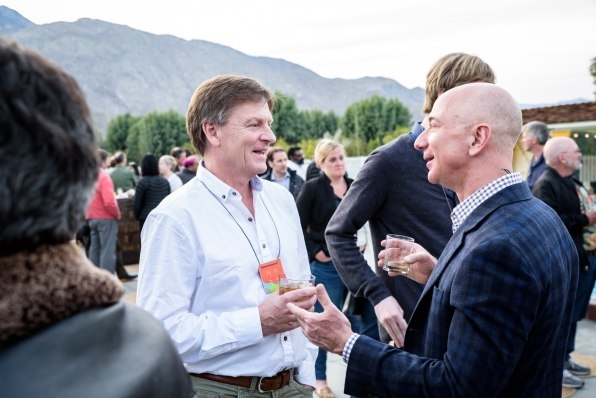
Out Of The blue
For me, as for many MARS attendees, the invitation came out of the blue. The organizers decided to allow a small group of journalists to attend, provided we agreed to certain ground rules. Conversations with attendees are on background, unless they agree to go on the record. For a chance to kibitz with these big brains for 72 hours–there was no question I was on board.
Although there had been at least one journalist at last year’s MARS, inviting five of us was clearly a last-minute decision–as evidenced by a one-page addendum tucked inside the back cover of the attendee-list booklet. The only names on it were myself and four fellow scribes.
Amazon knew that the group of reporters they selected were the kinds to focus mainly on bigger-picture stories, and deep dives that could potentially emerge from the rich conversations that take place during the event. Another reason the company green-lighted a few journalists is likely too–it benefits by people being reassured that it’s not bringing together a cabal behind the Parker’s imposing hedges that’s intent on taking over the world with AI. Spoiler: The company may have ambitions to be just about everywhere in our lives, but I can comfortably attest that, in fact, MARS featured no scheming cabal.
What really goes on is conversation, and lots of it. Everywhere you look during the three days, clusters of attendees were deep in discussion, sometimes casual, but often complex, engineering-heavy, or steeped in technical minutiae. There was also, of course, a lot of gawking at Boston Dynamics’s robot dog.
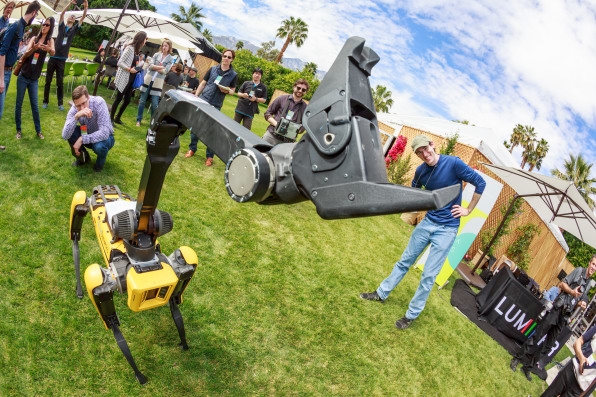
Yet despite all attendees having at least two things in common–fierce intellect and enviable achievements–another common experience seemed to be a feeling of not being nearly as smart as everyone else, a sentiment you’d hear again and again.
“When I’m here, I feel like the dumbest guy in the room,” says Krzanich. Normally, “I don’t get to hear about [things like] gravitational waves, so I get to soak it all in.”
Breakfast Via Kiva
Breakfast starts early at MARS–6:30. All around a room known as the Mafiya Suite, sumptuous plates of food beckoned. Close to the room’s entryway, a table loaded down with bowls of strawberries, raspberries, grilled pineapple, and other goodies. Still bleary-eyed from late-night discussions over whiskey and cigars, guests would start to serve themselves and be confused about why the bowls didn’t seem to be where they’d been a few seconds earlier.
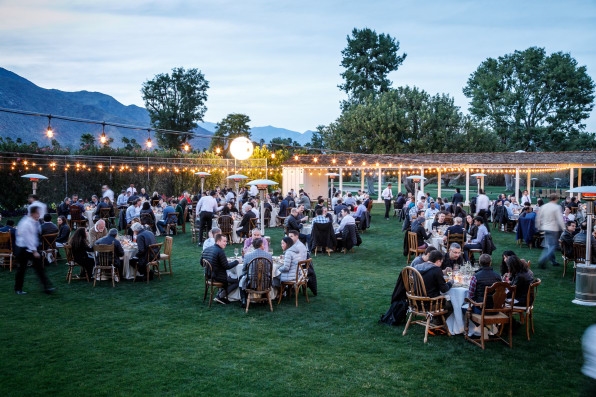
“That’s rotating,” one attendee said, realizing that the table was slowly turning thanks to one of Amazon’s Kiva robots. “That’s a really bad idea.”
Maybe. But the many millionaires on hand found a way to persevere. After breakfast each morning, everyone would wander over to a nearby building for several hours of presentations. The topics varied widely–from a discussion about Intel drones, complete with a performance of dozens of them flying just over our heads, to a talk about a sub-$500 vest that could help the deaf with “sensory substitution,” to a look at the latest advances in the kind of robot gripping technology that you can imagine Amazon is very interested in. There was a look at an entirely new kind of rocket engine–which is powering a launch every 72 hours off a New Zealand island, and finally a demonstration of the latest humanoid robot from Boston Dynamics. And that was all just on day one.
What the robot sees. Boston Robotics at @JeffBezos’ #mars2018 pic.twitter.com/pR8y9KyLR0
— Lindy Elkins-Tanton (@ltelkins) March 19, 2018
Day two began with a demo of technology that can intuit our health from nothing more than our voices, continued on into deep science with talks including a look at ion engines for small satellites, a presentation titled “gravitational waves: the cosmic soundtrack,” a demo of performance-enhancing clothing, and finally an examination of benign 3D-printed viruses.
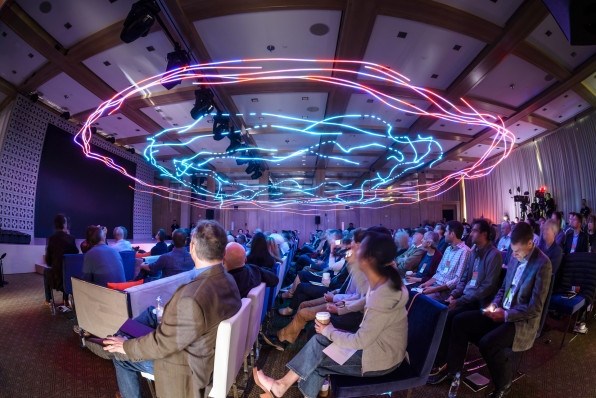
What was interesting, given Bezos’s endless optimism about the positive benefits of the technologies and disciplines at the center of MARS, is that none of the presentations addressed our planet’s most pressing problem–climate change. And despite being in the middle of a culture-wide conversation about diversity, every presenter (other than an Amazon executive kick-starting day two) who took the stage was white, and just four were women.
Still, there were dozens of women at MARS, most of whom posed together before Monday-night’s dinner for a “Women of MARS” photo.
And looking at the roster of MARS attendees, it’s hard to imagine anyone more proud of the names on the list than Rod Brooks. The famed roboticist is a three-time MARS attendee, and he tells me that among those scheduled to be at the conference this year were three women who were his former students. Even better, Brooks says, is that one of their own students was on hand as well.
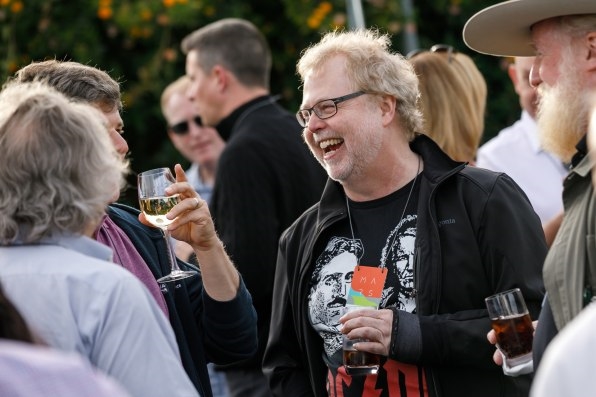
The Laughter Of Nathan Myhrvold
If there was one sound that defined MARS, it was the booming laughter of Nathan Myhrvold, the famous investor and former CTO of Microsoft. Over and over I heard it, from this direction and that.
That was just one of the delightful elements of color during the three days at the Parker. Others included Adam Savage’s collection of vintage space suits, the ability to climb into a mockup of Blue Origin’s New Shepard Crew Capsule, watching someone destroy aliens in an Asteroids-like video game using nothing but the smallest movements of his arm, and seeing people playing ping-pong against a robot.
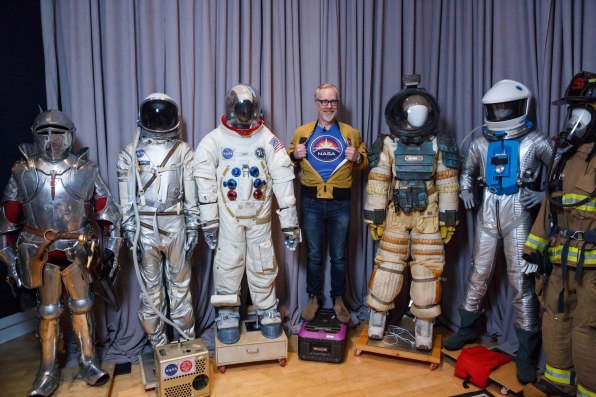
MARS is a feast for the brain, and though spending time there is likely to make you feel like you’re surrounded by people smarter than you, it’s also about becoming a member of an inspiring community of people that are not just talking about changing the world, but actually doing it.
“We do this conference because, think about it, if you could hold a conference about the beginning of a golden age, why wouldn’t you,” Bezos told the crowd as he opened up the final night’s presentations–which included an energetic story about spacesuits from Savage and a stunning video showing imagery of Jupiter taken by NASA’s Juno spacecraft. “It’s so fun. And I really do believe that we are on the leading edge of an incredible renaissance. I’m so optimistic about it.”
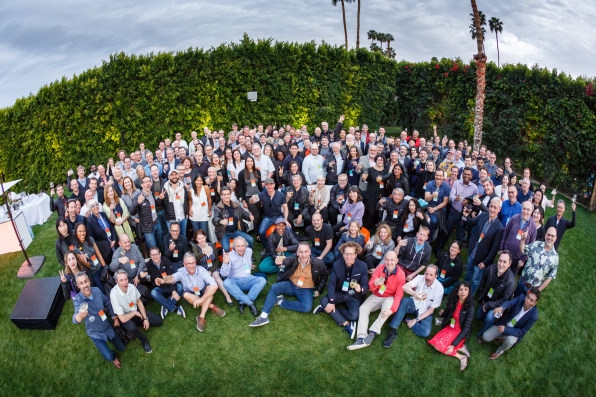
The pop-up MARS Book Club
While many MARS attendees quickly left Palm Springs, some of that community spirit extended beyond the Parker Hotel on getaway day.
Thanks to bad weather across the country, pretty much every flight out of Palm Springs was delayed by hours–including United flight 1620 to San Francisco that a number of us were on.
Sensing an opportunity to keep the camaraderie going, Autodesk fellow Mickey McManus grabbed a few of us waiting in the terminal and pulled us into a nearby restaurant for a “pop-up MARS book club.”
Over the next couple of hours over drinks and french fries, as we roped in a few more stranded “Martians,” we compiled a prodigious list of books we recommended to each other, and now, to the world. Who wouldn’t want to know what the smartest scientists and technologists in the world like to read?
Starting with “guilty pleasures,” we came up with The Princess Bride, Ready Player One, The Long Way To A Small, Angry Planet, Maestra, Chaos Monkeys, and Chomp.
Under “epic journeys,” the recommendations were Everything is Illuminated, Factory Girls, Shogun and other James Clavell “Asian saga” works, The Thousand Autumns of Jacob De Zoet, Under Heaven, The Source, Endurance, and In The Kingdom of Ice.
Another category was “MARS-appropriate,” and included The Man Who Lied To His Laptop, Sun of Suns, Ender’s Game, True Names, H Is For Hawk, A Fire Upon The Deep, Wired For War, Ancillary Justice, Antifragile, and Out Of The Silent Planet.
Lastly, and most humbly, we compiled a list of “books nobody bought, by Martians.” That included Cloud Computing: Business Trends And Technologies, Trillions, and yours truly’s The Entrepreneur’s Guide To Second Life.
(43)

